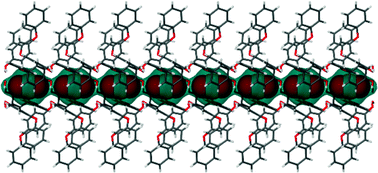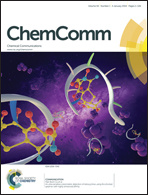Carbon dioxide entrapment in an organic molecular host†
Abstract
4-Phenoxyphenol crystallises to yield discrete ∼60 Å3 cavities that are capable of enclathrating small solvent molecules; the cavities are capped by constricted 6-membered hydrogen-bonded rings and these potential apertures do not appear to facilitate gated porosity when the material is subjected to static CO2 pressure.

- This article is part of the themed collection: CO2 Separation, Capture and Reuse

 Please wait while we load your content...
Please wait while we load your content...